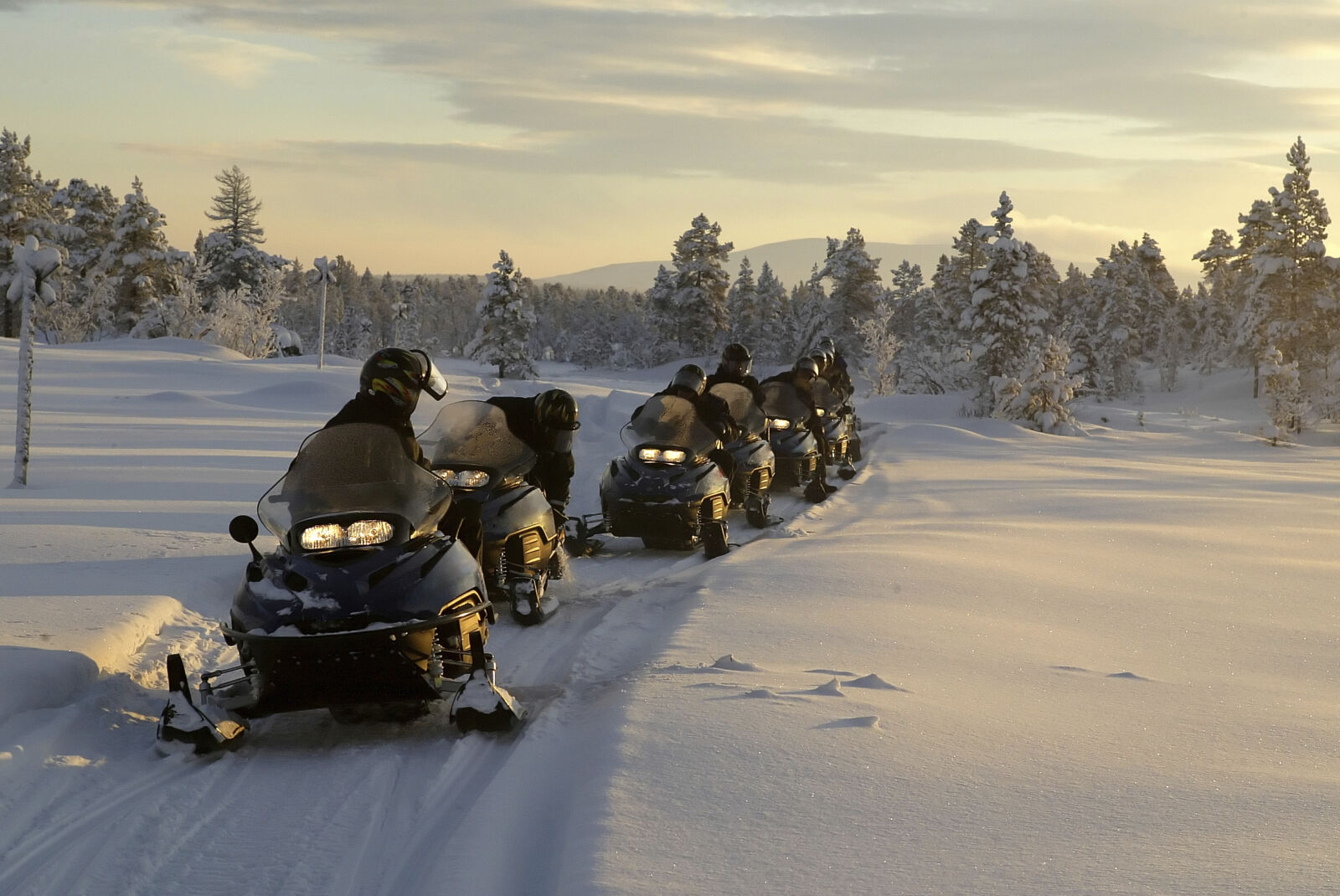National Forests from California to Vermont provide some of the best snowmobiling opportunities in the country. Thousands of miles of trails loop through these forests, providing groomed networks that attract riders from neighboring towns and far-flung locales.
So how does the Forest Service, which is notoriously strapped for cash, manage to keep thousands of miles of trails groomed and maintained for these cold weather recreationists? Through creative multi-party partnerships.
A Growing Sport
In the 1970s and 80s, advances in snowmobile technology began attracting new enthusiasts to the sport. State governments, tasked with regulating snowmobiles just like any other motorized vehicle, required snowmobilers to register their sleds, providing new recreation-based revenue. At the same time, local enthusiasts began organizing clubs and events to build community and find places to ride.
Many of these early trail systems followed snow-covered Forest Service roads in states like Washington, Oregon, Idaho, Montana, Minnesota and Vermont. But the agency didn’t have funding to cover grooming or trail maintenance costs, so it began forming partnerships with the states and the clubs.
States used the money from snowmobile registration fees to
provide grants to local clubs who in turn partnered with the Forest Service to
groom and maintain the trails. Eventually, states recognized that snowmobilers
were also purchasing enough gas for their machines that a portion of the state
gas tax added to each gallon of gas could be dedicated to maintaining and
grooming trail systems as well. These partnerships, refined and improved, are
still at work today, nearly four decades later.

Thousands of Miles, Hundreds of Clubs
Minnesota offers what is perhaps the country’s largest system of groomed trails—about 20,000 miles. On the Superior National Forest, a network of 700 miles of trails intersect with hundreds more trail miles on state, county and private lands. The Forest partners directly with more than a dozen clubs whose volunteers groom and maintain the trails. These volunteers also help with signage, trail inspections and trail planning efforts.
Although many of the clubs utilize volunteers to operate grooming equipment, there are still hard costs associated with grooming and maintaining the trail systems. The State of Minnesota provides grants to the clubs to offset these hard costs through their "Grant-In- Aid" program. Because this form of winter recreation is so important to the remote towns that border this sprawling forest in northern Minnesota, the Superior does provide some money to the state to help support the grooming programs. A 2005 study by the University of Minnesota’s Tourism Center estimated the direct snowmobiling-related expenditures of residents and non-residents at a whopping $199.6 million. Of this, $78.6 million was spent on travelling to snowmobiling destinations. While not all of this is directly related to National Forest opportunities, these lands do play a critical role in supporting local economies during the long Minnesota winters.
Without these self-funded programs in place, opportunities for zipping off into the wintery woods would be limited.
In Washington, the program is pretty similar. The Washington State Parks department provides the funding, but it doesn’t only go to local clubs. The Parks department also works with private contractors who groom trails and plow parking lots. In a few cases, where a specific Forest or District has grooming equipment, the state provides funds to cover the costs of using that equipment. Regardless of whether it’s a club, a contractor or the Forest Service doing the grooming, oversight and enforcement are ultimately the responsibility of the Forest Service. Although here too, partnerships help share the burden.
State game wardens and department of natural resource law enforcement officers help the Forest Service patrol trail networks and parking lots for unregistered snowmobiles, folks operating snowmobiles under the influence of drugs or alcohol and riders violating access regulations. In Montana, where there are 4,000 miles of snowmobile trails across the state and 26 different snowmobiling clubs, these partnerships have grown to support Nordic skiing opportunities as well. On the Idaho-Montana border, snowmobilers and Nordic skiers utilize separate trail systems that start at the Lolo Pass Visitor center. In 2014, the local “SnoGoers” snowmobile club that grooms the motorized trails agreed to use its state-provided grant funding (with funding contributed by the Nordic ski club as well) to groom the Nordic ski trails because the local Nordic club’s grooming machine no longer worked. This unique partnership provides both motorized and non-motorized recreationists an opportunity to enjoy their respective sports.
Without these self-funded programs in place, opportunities for zipping off into the wintery woods would be limited. Importantly, very little federal money is spent maintaining these systems. In fact, little state money is spent either, as the registration and gas tax revenues cover the cost of administering the programs.
The next time you consider riding a snowmobile through a National Forest, remember the multiple groups that work together to make your ride possible. From local snowmobile clubs who spend long, dark hours grooming trails to the state parks officials who manage the grant programs that support the grooming to the Forest Service officials who ensure public safety, there’s a strong network of partners who provide the opportunity to zip through dense forests and open snow-filled meadows.

